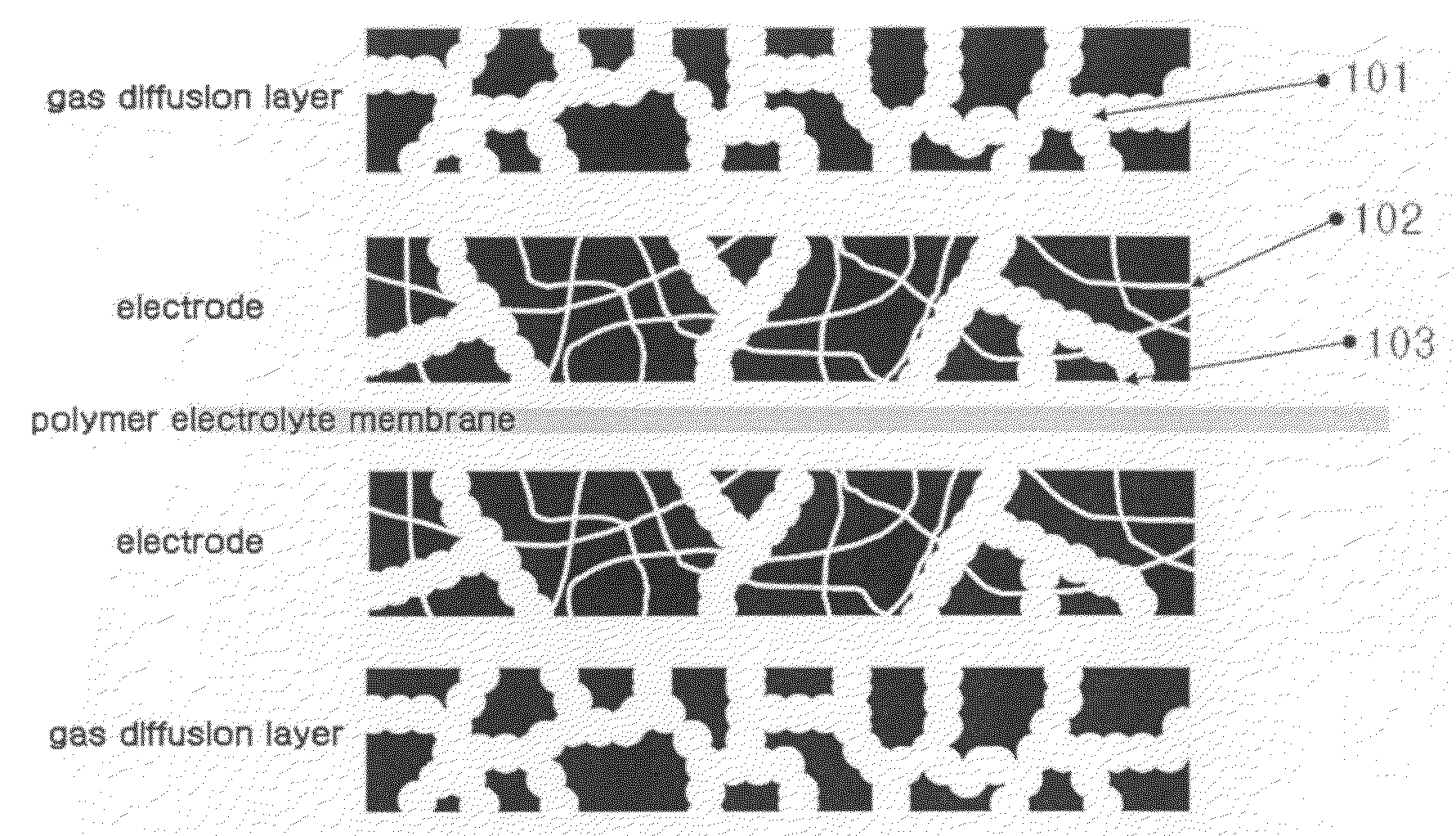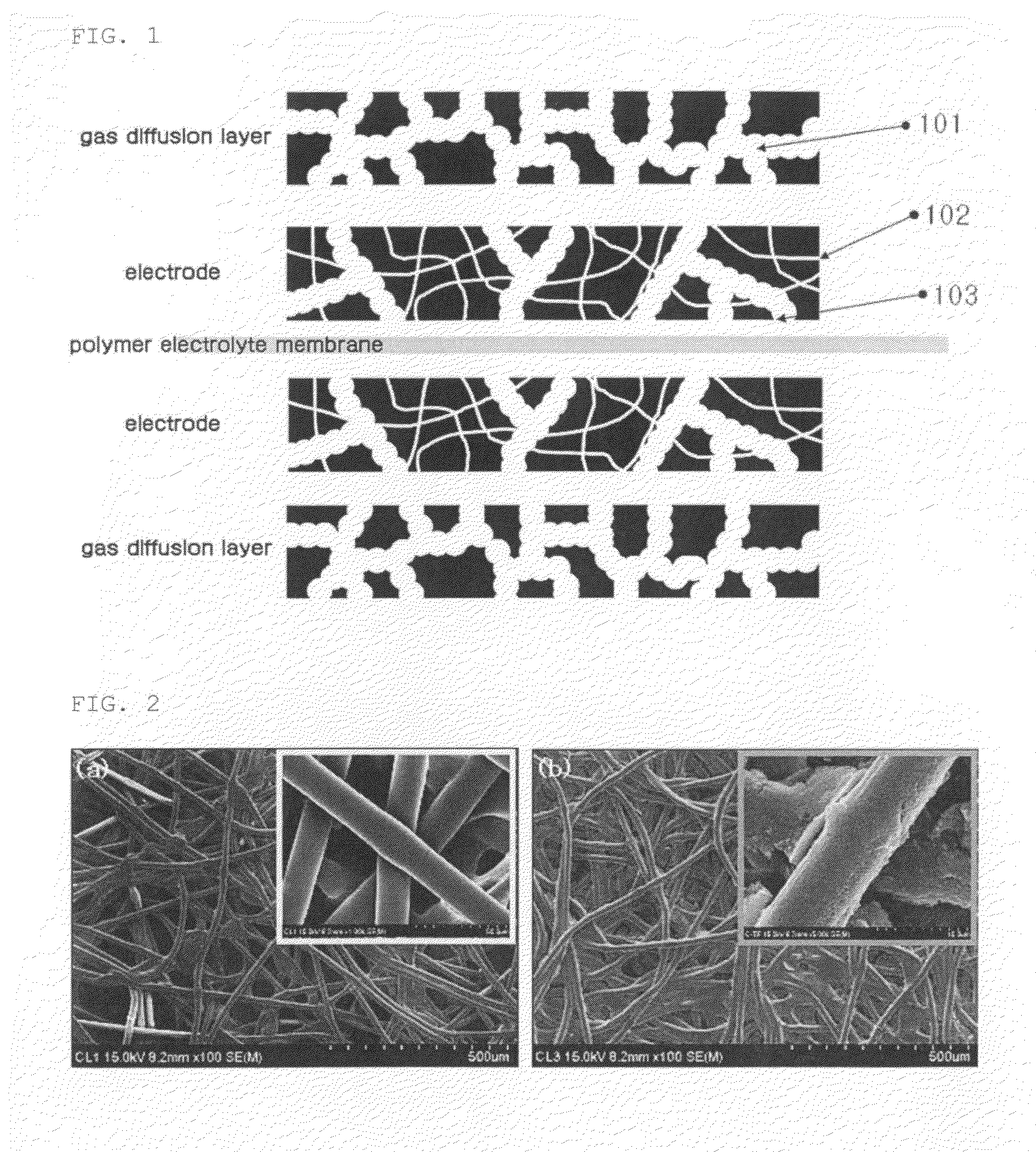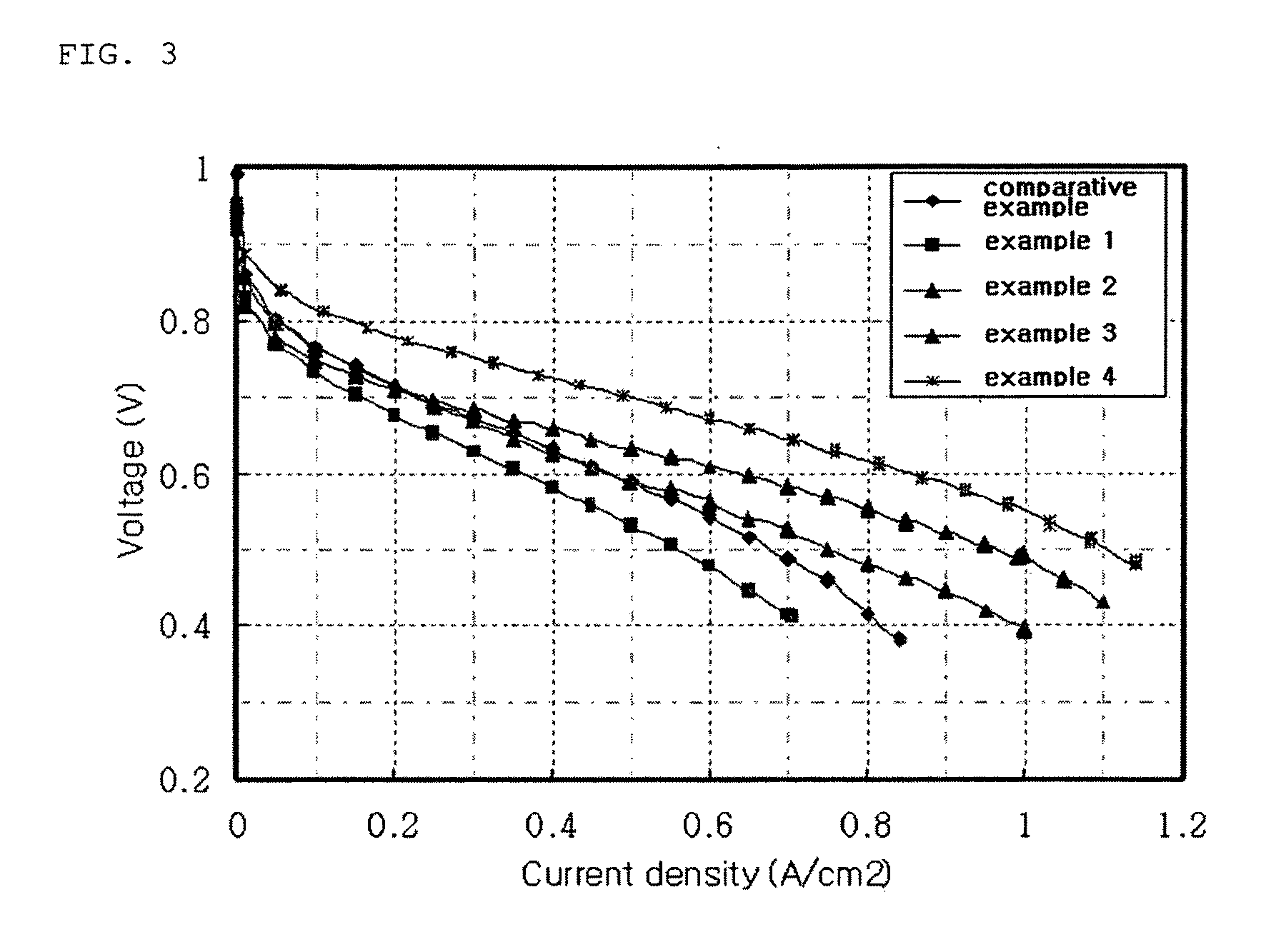Process to prepare the self-stand electrode using porous supporter of electrode catalyst for fuel cell, a membrane electrode assembly comprising the same
a fuel cell and self-standing technology, applied in the field of porous electrodes, can solve the problems of deterioration of fuel cell performance, complicated manufacturing methods, and deterioration of durability, and achieve excellent performance, improve fuel cell performance, and enhance conductivity and electrochemical activity
- Summary
- Abstract
- Description
- Claims
- Application Information
AI Technical Summary
Benefits of technology
Problems solved by technology
Method used
Image
Examples
example 1
(1) Preparation of Catalyst Ink
[0038]40 wt % Pt / C (Tanaka Kikinzoku Kogyo Kabushiki Kaisha) / water / isopropyl alcohol / ionomer (20% Nafion solution) are mixed at a mixing ratio 1:6:6:6 wt % / wt % shown in the publicly known document (J. H. Kim et al, J. Power Sources 135 (2004) 29.) and then put into a bath maintained at 4° C., thereby being stirred at 10,000 RPM using a homogenizer for two hours. The prepared catalyst ink is ripen for twenty-four hours and is sonificated for ten minutes before it is to be coated, thereby being used. The viscosity of the prepared catalyst ink is 200 cps and the d50 value of a secondary diameter of the catalyst particle is 0.65 μm.
(2) Coating of Catalyst Ink
[0039]A non-conductive porous substrate (mixture of viscose rayon / polyester (DuPont Company, Name of Product: Sontara), 85% porosity, average pore size 4 μm) having a thickness of 20 μm is put on a spray coating device of whose lower plate is heated at 70° C. and its both sides are coated with the pre...
example 2
[0042]A membrane-electrode assembly is prepared in the same manner as that shown in the example 1 and then a unit cell is engaged. However, a porous substrate having a thickness of 5 μm is used.
example 3
[0043]A membrane-electrode assembly is prepared in the same manner as that shown in the example 1 and then a unit cell is engaged. However, a porous substrate having a thickness of 10 μm is used.
PUM
| Property | Measurement | Unit |
|---|---|---|
| porosity | aaaaa | aaaaa |
| thickness | aaaaa | aaaaa |
| mean secondary particle diameter | aaaaa | aaaaa |
Abstract
Description
Claims
Application Information
 Login to View More
Login to View More - R&D
- Intellectual Property
- Life Sciences
- Materials
- Tech Scout
- Unparalleled Data Quality
- Higher Quality Content
- 60% Fewer Hallucinations
Browse by: Latest US Patents, China's latest patents, Technical Efficacy Thesaurus, Application Domain, Technology Topic, Popular Technical Reports.
© 2025 PatSnap. All rights reserved.Legal|Privacy policy|Modern Slavery Act Transparency Statement|Sitemap|About US| Contact US: help@patsnap.com



